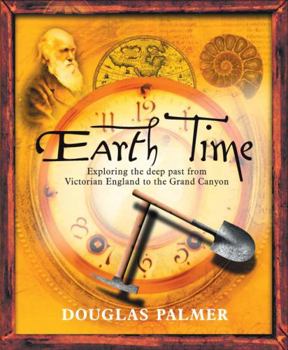Earth Time: Exploring the Deep Past from Victorian England to the Grand Canyon
Select Format
Select Condition 
Book Overview
The dramatic history of planet Earth and the rocky road to understanding the past A probing account of the history of the earth and an introduction to the many eccentric characters that have attempted to understand its origins. Full of fascinating anecdotes about 19th century explorers and natural philosophers who first carved up Earth's history just as others were carving up the globe. Unravels the fascinating history of rock strata and the implications they have had on accepted theories on the Earth's life. Considers the future of the earth, and what a repeat of some of the catastrophic events of the earth's past, such as major earthquakes and asteroid collisions, could mean for life today.
Format:Paperback
Language:English
ISBN:0470022213
ISBN13:9780470022214
Release Date:May 2005
Publisher:Wiley
Length:304 Pages
Weight:1.22 lbs.
Dimensions:1.0" x 6.1" x 7.5"
Customer Reviews
1 rating
Quite good introduction
Published by Thriftbooks.com User , 18 years ago
A singular description of "Earth Time" would not be helpful, as the book is really two in one. The first half is a history of the development of the (relative) geologic time scale, set largely in 19th century England. The second half is a more technical discussion of the stratigraphy of the Grand Canyon, with the book closing on a summary of radiometric dating techniques. The organization of the work is interesting; its first half covers the time scale from the Holocene back to the Precambrian, while the second half starts from the Precambrian and works its way forward. There is a lot in this book to like, as the author wanders through the various personalities and historical set pieces that gave us the modern geologic time scale. Palmer's prose is light on tech and easy to read, and especially in the book's second half, he has a "just the facts" approach that makes it the strongest part of the book. One paragraph biographies of key individuals are sprinkled throughout the text; I found these distracting at first, but in retrospect felt they are probably more useful than a cumbersome appendix the reader would have to flip back and forth from. The book isn't perfect, though; for instance, in the first half, the Holocene and Precambrian feel glossed over, while in the second half more attention is given to radiometric dating than equally (and perhaps more) effective biostratigraphic dating. A chapter on the "Missing Mesozoic" strata of the Grand Canyon could have gone into a little more detail about the events that caused this hiatus. These are all minor quibbles, though. On the whole, I'd definitely recommend this book for those interested in the "meat and potatoes" of how the geologic time scale was developed; as an historical geology geek, I greatly enjoyed it.






